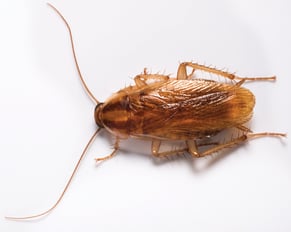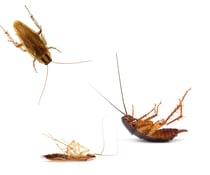 Cockroaches are an incredibly successful group of organisms. They have astonishing resilience and can withstand harsh conditions, including extreme temperatures, periods without food and water, and even high levels of radiation. In the United States, the German cockroach is the primary cockroach of concern. Commonly found infesting homes, restaurants, and other food handling establishments, the German cockroach is a medically and economically significant pest. Here are some fun facts you should know when it comes to cockroaches:
Cockroaches are an incredibly successful group of organisms. They have astonishing resilience and can withstand harsh conditions, including extreme temperatures, periods without food and water, and even high levels of radiation. In the United States, the German cockroach is the primary cockroach of concern. Commonly found infesting homes, restaurants, and other food handling establishments, the German cockroach is a medically and economically significant pest. Here are some fun facts you should know when it comes to cockroaches:
Cockroaches are thigmotactic
Thigmotactic is a 5-dollar word that means cockroaches seek physical contact with objects and surfaces, liking to be touched on all sides of their body. This is why we often see them squeezing themselves into and hiding in tight cracks and crevices.
Cockroaches meticulously groom themselves
Despite their reputation for being a dirty pest (which in many ways they are), cockroaches are actually quite tidy. They frequently clean themselves, spending a significant amount of time grooming their bodies to remove debris and buildup.
Cockroaches have some unsettling feeding tendencies
Being omnivorous scavengers, cockroaches will feed on an array of sugary, starchy, fatty, and proteinaceous foods. Additionally, they’ve been observed to feed on feces (coprophagy), dead or nearly dead cockroaches (necrophagy), and regurgitates or other bodily fluids (emetophagy).
Cockroaches lay their eggs in a hardened case called an ootheca
The number of cockroach eggs per oothecae largely depends on the species. For instance, German cockroach ootheca can contain 30-40 eggs, while brown-banded cockroach ootheca contain approximately 18 eggs.
But not all of them deposit an ootheca… some cockroach species give birth to live young
Live birth is unusual among the insects, who most commonly lay eggs from which their offspring will hatch out of. Eggs of the green Cuban cockroach, for example, hatch inside the female’s abdomen. After a postnatal development period, she will give birth to approximately 30 live nymphs.
PCO Technical Services Manager

